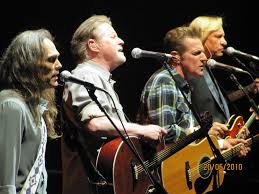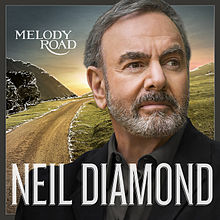
SOME time in the early 1980s, my first exposure to the Eagles came through the radio. Strangely, it wasn’t with their super-hit ‘Hotel California’, but with two other gems ‘Lyin eyes’ and ‘One of these nights’, both of which impressed me instantly. Those days, I was just getting into rock, but by tastes were quite strong on pop and country. As the Eagles used a bit from all these genres, I loved their sound.
Memories of my early and subsequent exposure to the Eagles came alive again on Saturday, January 17, when I attended the performance by Scottish tribute band Hotel California at the Willingdon Catholic Gymkhana in Santa Cruz, Mumbai. Almost 20 years ago, I had seen another tribute band whose name I don’t remember, at the Sophia Bhabha Hall. Needless to say, I enjoyed both shows thoroughly, but one of my regrets is not seeing the original band live.
On Saturday, the Scots played many of the popular songs, right from ‘Seven bridges road’, ‘Peaceful easy feeling’, ‘New kid in town’, ‘Take it easy’, ‘Desperado’, ‘Lyin eyes’, ‘Best of my love’, ‘Witchy woman’, ‘Already gone’, ‘Tequila sunrise’, ‘One of these nights’, ‘Life in the fast lane’, ‘Take it to the limit’, and ‘Hotel California’, to some solo numbers like Don Henley’s ‘Boys of summer’ and Joe Walsh’s ‘Rocky Mountain way’. They also omitted a lot of favourites, like ‘Heartache tonight’, ‘Pretty maids all in a row,’, ‘The long run’, ‘Doolin-Dalton’, ‘Love will keep us alive’, ‘Get over it’, ‘Victim of love’, ‘In the city’, ‘I can’t tell you why’, ‘Waiting in the weeds’ and probably because they didn’t have a saxophonist, ‘The sad café’.
The tribute band definitely provided many moments of nostalgia, and musically, they excelled with their crisp vocals and tight guitars, with Jim Bowie producing some amazing slide and wah-wah riffs. The strong point of the Eagles music was their vocal harmonies, and the duplicates blended them well, though at times, one felt they never went as effortlessly high as the originals. One guesses they should have been given more time, shortening the performance of opening act Silvia, who buoyantly sang some bubbly pop and disco hits, but whose music wasn’t really in sync with what was in store. Another four or five songs by Hotel California, and it would have been perfect.
—
THAT much about the tribute. A bit more on the Eagles influence.
To me, the Eagles is one of the three American bands to release relatively fewer albums, and yet consistently produce sing-along anthems. The other two bands I am referring to are Creedence Clearwater Revival (CCR) and the Doors featuring Jim Morrison. If one excludes the two Doors albums without Morrison and includes their ‘An American Prayer’, which posthumously used recordings of his vocals and spoken words, all these three bands released seven studio albums of fresh material.
The Doors released their first six albums between 1967 and 1971, when Morrison died, and ‘An American Prayer’ was out in 1978. CCR released their seven albums between 1968 and 1972, the year in which the Eagles came out with their self-titled debut. The latter released six great albums till 1979, and then after a really long gap, came out with ‘A Long Road Out of Eden’ in 2007. Their songs continued to be played, and there was a sudden Eagles wave in 1994 when they released ‘Hell Freezes Over’, essentially a live album with four new studio recordings thrown in.
The Doors, CCR and the Eagles thus released very few albums. But their consistency with whatever they released was too high. The only other band which arguably beat them in the frequency of widely-known hits was the Beatles, despite releasing more albums. And if one includes the pure pop world, Swedish group ABBA were probably equally high in consistency over eight studio albums.
With such a perfect record, it’s no surprise that the Eagles are one of the world’s most popular groups. And the best thing about them is that had could attract rock fans, pop fans and country fans. They had what is called a ‘four quadrant appeal’, in that they were loved equally by young people, old people, males and females. That’s what makes them the largest selling American band, and the fifth largest selling musical act, in history, with figures exceeding 150 million records.
—
MY own experience of listening to the Eagles can be divided into many phases. First came the radio phase, with ‘Lyin eyes’ and ‘One of these nights’ followed by ‘Hotel California’ and ‘Take it easy’. Those were the days I enjoyed the basic melodies and sound. From their accents, it was obvious they were an American band, but for many years, I had no clue they represented the southern California sound.
This was followed by the compilations phase, when I heard cassettes of ‘Their Greatest Hits (1971-1975)’ and ‘Eagles Greatest Hits Vol 2’, discovering gems like ‘Peaceful easy feeling’, ‘Tequila sunrise’, ‘Desperado’, ‘The sad café’, ‘I can’t tell you why’ and ‘Life in the fast lane’.
Naturally, I began exploring the studio albums, first buying vinyl copies of ‘Hotel California’ and ‘The Long Run’. This introduced me to the individual contributions of vocalists-guitarists Don Felder, Glenn Frey and Joe Walsh, drummer-vocalist Don Henley and bassist Randy Meisner and his successor Timothy B Schmidt. I read in a magazine that singer Bob Seger did the back-up vocals on ‘Heartache tonight’ but didn’t get any credit, and that jazz saxophonist David Sanborn played the remarkable solo on ‘The sad café’.
After listening to earlier studio albums like ‘Eagles’, ‘Desperado’ and ‘One of these nights’, I also began appreciating the work of vocalist-guitarist Bernie Leadon. I discovered that Jackson Browne co-wrote ‘Take it easy’ and Jack Tempchin penned ‘Peaceful easy feeling’. The one album I have never heard completely is 1974’s ‘On The Border’, and was thus clueless of the Tom-Waits-written ‘Ol 55’, which the tribute band played the other day.
Barring ‘On The Border’, I heard the albums repeatedly, but like is the case with many bands, there was a temporary stoppage as far as the Eagles were concerned, the only exception being the song ‘Hotel California’, which was covered by half the bands on earth. There were some small forays into the band members’ solo albums, like Don Henley’s ‘The End of the Innocence’ and Joe Walsh’s ‘Got Any Gum?’ but most of the solo recordings were not available in India, and they didn’t sound as great as the band anyway.
In the mid-1990s, the release of the live album ‘Hell Freezes Over’ marked the return of the Eagles phase. The acoustic version of ‘Hotel California’ was stunning, the newer songs ‘Get over it’, ‘Love will keep us alive’, ‘The girl from yesterday’ and ‘Learn to be still’ had the Eagles class, and the live renditions of ‘Tequila sunrise’, ‘Wasted time’, ‘Take it easy’, ‘I can’t tell you why’ and the Henley solo ‘New York minute’ was all superbly executed.
By this time, the way one appreciated music also changed. If I initially liked the songs more for the melodies and hooks, I now got deeper into the lyrics and the harmonies. The Eagles songs have such intricate vocal harmonies, and hearing them closely offered a completely new perspective. So I would hear all the old favourites again, but with special focus on the harmonies. I would appreciate the guitaring patterns in greater detail, and also the drumming of pieces like ‘Heartache tonight’ and ‘New kid in town’. One also started identifying more with the southern California sound they represented, and that added to the listening pleasure.
After another short pause, the DVD phase arrived. The ‘Hell Freezes Over’ DVD was out in the late 1990s, but the real masterpiece was the ‘Farewell Tour 1-Live from Melbourne’ double set released in 2005. Besides the popular hits, it had the Walsh solo ‘One day at a time’, which celebrated his recovery from cocaine and alcohol addiction. The 2013 documentary ‘History of the Eagles’ also makes for perfect viewing for fans.
The last album ‘Long Road out of Eden’, released in 2007 after a 28-year gap, had some great numbers too, specially ‘Waiting in the weeds’, ‘Busy being fabulous’, ‘No more cloudy days’ and ‘How long’. Sadly, many old-time Eagles fans didn’t get too deeply into it, even though it did commercially well, and was the highest selling album of that year.
As with the general trend, the past few years have involved discovering some rare Eagles footage on YouTube, including some fantastic live sessions from 1977. Now, after the recent tribute concert, another Eagles phase has begun. Of course, the immediate priority is to give a closer listen to ‘On The Border’.
For its part, the band has had some well-received tours since 2013. Though the shows continue today, Henley has indicated their performances may soon come to an end. The fact, of course, is that the Eagles have released enough great music which fans can relish forever. Even after 35 or 40 years of listening to them, one finds something new. That’s precisely why they are so special.




